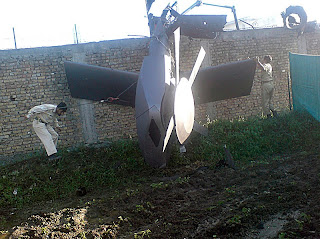The helicopters that flew the Navy SEALs on the mission to kill Osama bin Laden were a radar-evading variant of the special operations MH-60 Black Hawk, according to a retired special operations aviator.
The helicopter’s low-observable technology is similar to that of the F-117 Stealth Fighter the retired special operations aviator said. “It really didn’t look like a traditional Black Hawk,” he said. It had “hard edges, sort of like an … F-117, you know how they have those distinctive edges and angles — that’s what they had on this one.”
In addition, “in order to keep the radar cross-section down, you have to do something to treat the windshield,” he said. If a special coating was applied to the windshield it is “very plausible” that would make the helicopter more difficult to fly for pilots wearing night-vision goggles, he said. The helicopters carrying the SEALs arrived over the bin Laden compound at about 1 a.m. Monday local time. One crash-landed in the courtyard and was so badly damaged it was unable to take off again.
That crash landing might have been caused by a phenomenon known as “settling with power,” which occurs when a helicopter descends too quickly because its rotors cannot get the lift required from the turbulent air of their own downwash. “It’s hard to settle with power in a Black Hawk, but then again, if they were using one of these [low-observable helicopters], working at max gross weight, it’s certainly plausible that they could have because they would have been flying so heavy,” the retired special operations aviator said, noting that low-observable modifications added “several hundred pounds” to the weight of the MH-60, which already weighs about 500 to 1000 pounds more than a regular UH-60 Black Hawk.









0 comments:
Post a Comment